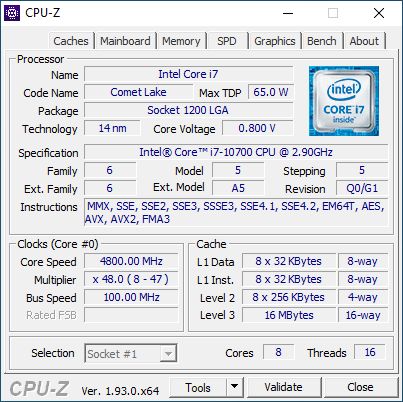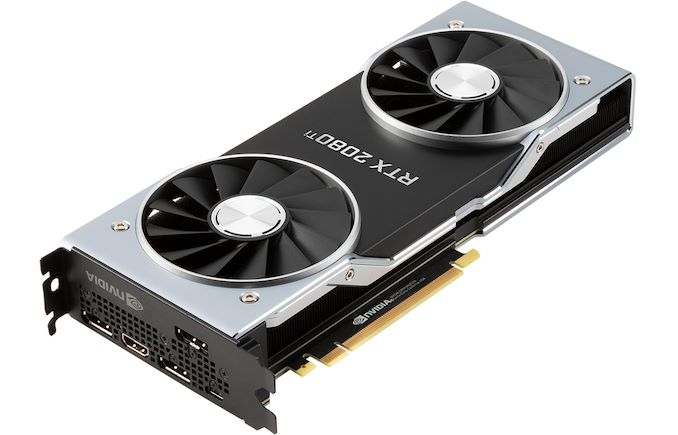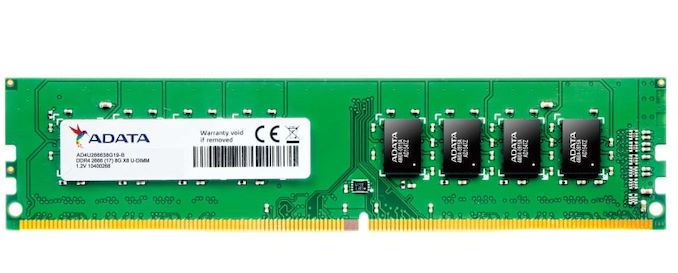Intel Core i7-10700k vs Core i7-10700K Review
Throughout the long term, Intel's buyer processor arrangement has highlighted its typical cluster of overclocking 'K' models, and all the more as of late the 'F' arrangement that comes without coordinated illustrations.
The greater part of the arrangement anyway is as yet the forms without a postfix, the 'nones', like the Core i7-10700 in this audit. These processors sit in the street, quite often having a 65 W TDP contrasted with the 91-125 W overclockable models, yet in addition having coordinated designs, in contrast to the F family.
What makes it intriguing is the point at which we pair one of these 65 W parts against its 125 W overclocking partner, and if the additional base and super recurrence help are really worth the cash in a period where motherboards don't appear to think often about force?
Intel's Core i7-10700 at 65 W: Is It Really 65 W?
The comprehension of the way that Intel references its TDP (warm plan point) values has experienced a smaller than normal upset over the most recent couple of years.
We have had a nearly decade of quad-center processors at around 90 W and 65 W, and a large portion of them could never arrive at these numbers significantly under super modes - for instance, the Core i5-6600K was evaluated at 91 W, however top force draw was just 83 W. This has been the standard for some time, as of not long ago when Intel needed to begin boosting the center check.
As we have gradually gone up in center tally, from 4 to 6 to 8 and now 10, these numbers have appeared to be practically subjective for some time.
The explanation comes down to what TDP truly is. Previously, we used to expect that it was the pinnacle power utilization of the processor was its TDP rating – all things considered, a 'warm plan purpose' of a processor was practically useless in the event that you didn't represent the pinnacle power scattering.
What makes Intel's circumstance unique (or befuddling, contingent upon how you need to call it) is that the organization characterizes its TDP with regards to a 'base' recurrence.
The TDP will be the greatest force under a supported outstanding burden for which the base recurrence is the base recurrence ensure. Intel characterizes a supported outstanding task at hand one wherein the 'super spending plan' has terminated, and the processor will accomplish its best recurrence above base recurrence (yet not super modes).
The point about 'not super' is the critical component here. Intel's TDP evaluations are just a result of the base recurrence, not the super recurrence.
On the off chance that a PC is worked considering a most extreme force scattering, permitting a processor to super over that force may have calamitous ramifications for the warm presentation of that framework.
The other point is that Intel never cites the super force levels (otherwise called Power Level 2, or PL2) close by different particulars, despite the fact that they are actually in the determination reports when they get delivered.
On top of this, motherboard makers likewise get a state in how a processor performs. Since super force is just a discretionary recommendation from Intel, actually Intel will acknowledge any incentive for the roof of the super force, and acknowledge super under any conditions if the motherboard producer needs it.
Motherboard makers overengineer their motherboards to help longer super occasions (or overclocking), thus they will frequently disregard these Intel suggested values for PL2, permitting the processor to super harder for more, and in a lot of instances of premium motherboards, inconclusively.
So why does all this matter with respect for this review? Well my key comparison in this review is our new processor, the Core i7-10700, up against its overclocking counterpart, the Core i7-10700K. Aside from the suffix difference, the K variant has a TDP almost twice as high, and this manifests almost entirely in the base frequency difference.
Intel SKU vs SKU(an homage to Spy vs Spy) | ||
| Intel Core i7-10700K | AnandTech | Intel Core i7-10700 |
| 8 C / 16 T | Cores / Threads | 8 C / 16 T |
| 3.8 GHz | Base Frequency | 2.9 GHz |
| 5.1 GHz | Peak Turbo (1-2C) | 4.8 GHz |
| 4.7 GHz | All-Core Turbo | 4.6 GHz |
| 2 x DDR4-2933 Up to 128 GB | DRAM Support | 2 x DDR4-2933 Up to 128 GB |
| 125 W | TDP / PL1 | 65 W |
| Intel UHD 630 | Integrated Graphics | Intel UHD 630 |
| $374 | Price (1ku) | $323 |
The base frequency is more of a minimum guaranteed frequency, than an absolute 'this is what you will get' value under a sustained workload. Intel likes to state that the base frequency is the guarantee, however if a processor can achieve a higher frequency while power limited, it will - if it can achieve that power value with 200 MHz above base frequency, it will run at the higher frequency. If this sounds familiar, this is how all AMD Ryzen processors work, however Intel only implements it when turbo is no longer available. This ends up being very processor dependent.
For the turbo, as mentioned, Intel has recommendations for power levels and turbo time in its documentation, however OEMs and motherboard manufacturers are free to routinely ignore it. This is no more obvious than when comparing these two processors. What does this mean for end-users? Well, graphs like this.
First time I saw these numbers, it shocked me. Why is this cheaper, and supposedly less powerful version of this silicon running at a higher turbo power in a standard off-the-shelf Intel Z490 motherboard?
Welcome to our review. There’s going to be a lot of discussion on the page where we talk about power, frequency, and the quality of the silicon. Also when it comes to benchmarking, because if we were to take an extreme view of everything, then benchmarking is pointless and I'm out of a job.
The Market
The Core i7-10700 and Core i7-10700K are both members of Intel’s 10th Generation ‘Comet Lake’ Core i7 family. This means they are based on Intel’s latest 14nm process variant (14+++, we think, Intel stopped telling us outright), but are essentially power and frequency optimized versions of Intel’s 6th Generation Skylake Core, except we get eight cores rather than four.
Intel 10th Gen Comet LakeCore i9 and Core i7 | ||||||||||
| AnandTech | Cores | Base Freq | TB2 2C | TB2 nT | TB3 2C | TVB 2C | TVB nT | TDP (W) | IGP | MSRP 1ku |
| Core i9 | ||||||||||
| i9-10900K | 10C/20T | 3.7 | 5.1 | 4.8 | 5.2 | 5.3 | 4.9 | 125 | 630 | $488 |
| i9-10900KF | 10C/20T | 3.7 | 5.1 | 4.8 | 5.2 | 5.3 | 4.9 | 125 | - | $472 |
| i9-10900 | 10C/20T | 2.8 | 5.0 | 4.5 | 5.1 | 5.2 | 4.6 | 65 | 630 | $439 |
| i9-10900F | 10C/20T | 2.8 | 5.0 | 4.5 | 5.1 | 5.2 | 4.6 | 65 | - | $422 |
| i9-10900T | 10C/20T | 1.9 | 4.5 | 3.7 | 4.6 | - | - | 35 | 630 | $439 |
| i9-10850K | 10C/20T | 3.6 | 5.0 | 4.7 | 5.1 | 5.2 | 4.8 | 125 | 630 | $453 |
| Core i7 | ||||||||||
| i7-10700K | 8C/16T | 3.8 | 5.0 | 4.7 | 5.1 | - | - | 125 | 630 | $374 |
| i7-10700KF | 8C/16T | 3.8 | 5.0 | 4.7 | 5.1 | - | - | 125 | - | $349 |
| i7-10700 | 8C/16T | 2.9 | 4.7 | 4.6 | 4.8 | - | - | 65 | 630 | $323 |
| i7-10700F | 8C/16T | 2.9 | 4.7 | 4.6 | 4.8 | - | - | 65 | - | $298 |
| i7-10700T | 8C/16T | 2.0 | 4.4 | 3.7 | 4.5 | - | - | 35 | 630 | $325 |
| T = Low Power F = No Integrated Graphics K = Overclockable TB2/TB3 = Intel Turbo Boost 2 (any core in CPU), TB3 (specific core in CPU) TVB = Thermal Velocity Boost (Spec = 70ºC); routinely ignored by motherboard vendors | ||||||||||
Both CPUs are rated to run dual channel memory at DDR4-2933 speeds, and have 16 PCIe 3.0 lanes with support for Intel 400-series chipsets. These are socket LGA1200 processors, and are incompatible with other LGA115x motherboards.
Aside from the power and frequency differences, the other one is the price: $335 MSRP for the Core i7-10700, and $387 MSRP for the Core i7-10700K. This is a +$52 difference, which is designed to enable better frequencies and overclocking on the K processor. The non-K processor may be shipped with Intel’s 65 W PCG-2015C thermal solution, depending on location, although the first thing you would want to do is to buy something/anything else to cool the processor with given that it'll peak at 215W in enthusiast systems.
On the competing side from AMD, the nearest solution is the Ryzen 5 5600X, a 65W version of Zen 3 with two fewer cores but higher IPC, with an MSRP of $300. This does come with a reasonably good default cooler. Our full review of the Ryzen 5 5600X can be found .
This Review
The goal of this review was initially just to benchmark the Core i7-10700 and see where it fits into the market. As our testing results came into focus, it was clear that we had an interesting comparison on our hands against the Core i7-10700K, which we have also tested. In this review the focus will be on the difference between the two, focusing primarily on where the i7-10700 lands compared to the competition, and perhaps some of the complexities involved.
Test Setup
As per our processor testing policy, we take a premium category motherboard suitable for the socket, and equip the system with a suitable amount of memory running at the manufacturer's maximum supported frequency.
This is also typically run at JEDEC subtimings where possible. It is noted that some users are not keen on this policy, stating that sometimes the maximum supported frequency is quite low, or faster memory is available at a similar price, or that the JEDEC speeds can be prohibitive for performance.
While these comments make sense, ultimately very few users apply memory profiles (either XMP or other) as they require interaction with the BIOS, and most users will fall back on JEDEC supported speeds - this includes home users as well as industry who might want to shave off a cent or two from the cost or stay within the margins set by the manufacturer.
| Test Setup | |||||
| Intel LGA1200 | Core i9-10900K Core i9-10850K Core i7-10700K Core i7-10700 | ASRock Z490 PG Velocita | BIOS P1.50 | TRUE Copper + SST* | Corsair DomRGB 4x8 GB DDR4-2933 |
| AMD AM4 | Ryzen 9 5900X Ryzen 7 5800X Ryzen 5 5600X | MSI MEG X570 Godlike | 1.B3 T13 | Noctua NHU-12S SE-AM4 | ADATA 2x32 GB DDR4-3200 |
| GPU | Sapphire RX 460 2GB (CPU Tests) NVIDIA RTX 2080 Ti FE (Gaming Tests) | ||||
| PSU | Corsair AX860i Corsair AX1200i Silverstone SST-ST1000-P | ||||
| SSD | Crucial MX500 2TB | ||||
| *TRUE Copper used with Silverstone SST-FHP141-VF 173 CFM fans. Nice and loud. | |||||
Many thanks to...
We must thank the following companies for kindly providing hardware for our multiple test beds. Some of this hardware is not in this test bed specifically, but is used in other testing.
| Hardware Providers for CPU and Motherboard Reviews | |||
| Sapphire RX 460 Nitro | NVIDIA RTX 2080 Ti | Crucial SSDs | Corsair PSUs |
 |  |  | |
| G.Skill DDR4 | ADATA DDR4 | Silverstone Coolers | Noctua Coolers |
 |  |  | |
A big thanks to ADATA for the AD4U3200716G22-SGN modules for this review. They're currently the backbone of our AMD testing.
Users interested in the details of our current CPU benchmark suite can refer to our #CPUOverload article which covers the topics of benchmark automation as well as what our suite runs and why. We also benchmark much more data than is shown in a typical review, all of which you can see in our benchmark database. We call it ‘Bench’, and there’s also a link on the top of the website in case you need it for processor comparison in the future.
If anyone is wondering why I've written the SKU of the processor on it with a sharpie, as per our lead image, it's because when you're shuffling through a box of them in low light, what is printed on the headspreader can be difficult to read if the light isn't right. With a perminent marker, it makes it much easier to read at-a-glance.
Read on for our full review.









